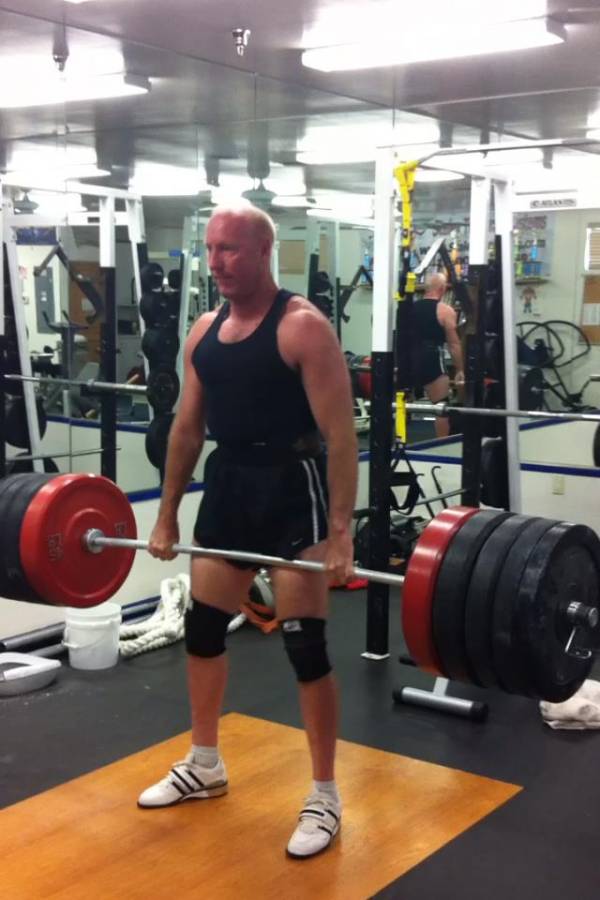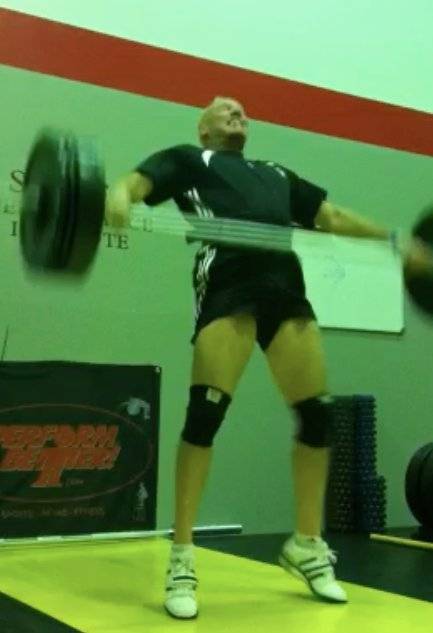Before I commence with the 4-week training program I’m about to share with you, I’d like to shed some light on my motivations for doing so (aside from the usual ego and career-enhancing motives that all of us “expert types” are inevitably afflicted with).
First, if you’ll excuse a bit of introspection on my part, I will most certainly learn more from this exercise than you (the consumer) will. Sending a training program like this “out into the world” says volumes about me and what I believe, which inevitably causes me to examine and in many cases re-examine my own principles and beliefs. As the old saying goes, “When one teaches, two learn,” and in a very real sense (and I hope you’ll receive enough value here to offset my selfish motives), I’m writing this more for me than for you.
Second, an with my just-mentioned selfish motives already revealed, it is my hope that that this program becomes the embodiment of the principles I believe in and hope to teach, above and beyond being simply a means to your personal ends, although I hope it is both. In just a bit, I’ll take you “under the hood” by outlining the key principles involved in my thinking. In this manner, when I “point the way” via this program, it’s hoped that you won’t be staring at my finger (with apologies to the great Bruce Lee), because if you do, you’ll miss the larger lessons that have the ability to empower your own programming skills.
Thirdly, and please don’t be offended, but it’s almost unfairly easy to “wow” the consumer with a novel-looking training program, at least initially. This is no one’s fault in particular – that “new car smell” (with the tip of the hat to one of my clients for that reference) soon diminishes with all programs no matter how effective they are. What starts off smelling like fresh ink soon reeks of sweat and (often) dried blood. When this happens, even the most disciplined among us fall prey to a wandering eye. The real test of a good program is longevity, and it’s my hope that you’ll find yourself still faithful to this training philosophy, months, or even years after you first read this.
 Finally, when thinking about my strengths as a teacher, I’ve never thought of myself as an originator of important ideas, but rather, a clarifier or “illuminator” of them. Therefore, please allow me the privilege of incorporating concepts that were either authored or popularized by other great thinkers and teachers who share my profession. In those cases where I’ve elected to use the ideas of others, I’ll provide attribution, but bear in mind that after many years of exploration, I sometimes attribute greatness to myself when it really belongs elsewhere. Perhaps it’s safer to posit right from the start that none of the ideas I’m about to share originated with me, and in fact, if I’ve done my work well, knowing this won’t in any way diminish your appreciation of what I’m offering here.
Finally, when thinking about my strengths as a teacher, I’ve never thought of myself as an originator of important ideas, but rather, a clarifier or “illuminator” of them. Therefore, please allow me the privilege of incorporating concepts that were either authored or popularized by other great thinkers and teachers who share my profession. In those cases where I’ve elected to use the ideas of others, I’ll provide attribution, but bear in mind that after many years of exploration, I sometimes attribute greatness to myself when it really belongs elsewhere. Perhaps it’s safer to posit right from the start that none of the ideas I’m about to share originated with me, and in fact, if I’ve done my work well, knowing this won’t in any way diminish your appreciation of what I’m offering here.
Key Principles
An old saying suggests, “If you don’t stand for something, you’ll fall for anything.” The saying applies to values, but it’s appealing to apply the same idea to principles – identifying your “core principles” helps you to stay on track during times of uncertainty and adversity. With that in mind, here are my “Top 10” list of operational principles as a coach. They form the basis of the program I’ll share with you below, because they have consistently proven their value with my clients over many years of coaching:
- Maximal strength, power, and functional hypertrophy are the most important training targets for most trainees.
- Corrective exercise, rehab/prehab, dynamic mobility, core stability, and all the rest of it, while applicable in specific instances, more often than not serve mostly as a diversion from what you really should be doing, which is getting bigger, faster, and stronger. I wrote the following program with the underlying assumption that you are not in need of the type of assistance that is more suited to a physical therapist, but if you are, I strongly suggest you explore the work of people like Gray Cook, Dr. Stuart McGill, Mike Boyle, Eric Cressey, and others.
- I live, eat and breath the 80/20 principle, which I won’t elaborate on any further, except to say that most people perform far too many exercises in their training. All too often, quantity becomes a regrettably poor substitute for quality, and I hope to at least enlighten you to, if not wean you from, this common error.
 I believe in a process-focused approach, which, put another way, is the application of maturity to training. Constantly seeking new PRs is alluring to be sure, but doing so is akin to spending your paycheck on a new power rack rather than saving or investing it instead – happy now, sad later. I value consistent, small incremental improvements because they are more sustainable and ultimately, lead to great heights than the alternative approach.
I believe in a process-focused approach, which, put another way, is the application of maturity to training. Constantly seeking new PRs is alluring to be sure, but doing so is akin to spending your paycheck on a new power rack rather than saving or investing it instead – happy now, sad later. I value consistent, small incremental improvements because they are more sustainable and ultimately, lead to great heights than the alternative approach.- I prefer the use of flexible structure rather than inviolate prescriptions. I view a training program much like I view driving down a “straight” road: over the course of a mile you’ll need to make hundreds of unanticipated, minor corrections in order to stay inside the lines.
- For me, performance is the best way to assess recovery. If your performance is down, you are not completely recovered from previous efforts.
- If you’ll forgive me for stating the obvious, pain is a sign that something is wrong. Do not train with pain – ever. This is not an article on how to resolve such issues, but if you do nothing but heed this advice, you’ll be further along than most.
- Find movements/pursuits that suit your innate levers, somatype, skillsets, fiber-type, disposition, and so on. I love Olympic lifts, other love kettlebells, bodybuilding, CrossFit, just to name a few. No matter how appealing it seems, don’t try to be a powerlifter if you can’t maintain a neutral lumbar spine during deadlifts. Don’t attempt to be a great gymnast if you’re 6’6” and 285 pounds. Find something you’re suited for, and then exploit your natural potential as best you can.
- I believe in meeting the client “where he lives” to borrow a great phrase from my friend Dave Jack. I’m certain that you won’t like everything about the program to follow, and part of the problem is that I either don’t like or haven’t anticipated your favorite ingredients. Therefore, I’ll strike a compromise: after you do what I want, you get to do what you want, no matter how inadvisable I may happen to think it is. Frankly, after you’ve deadlifted and rowed, if you want to do a few sets of plyometric kegels, I won’t mind a bit. Do we have a deal?
- Finally, and this tends to dovetail with at least a few of the earlier principles, I tend to be a minimalist. I very much appreciate the discipline it requires to “do the most with the least” as opposed to simply “covering all your bases,” which is easy, yet wasteful and inefficient. Nevertheless, perhaps you’re more of a minimalist than I am. If you this turns out to be the case, I suggest building a program from deadlifts and chins, which I suspect will deliver about 80% of the benefits that my below program will, in about half the time and effort. Few people find such brevity appealing however, so I’ll lose little sleep wondering if you’ll choose the above option over what I’m about to offer below.
With my introductory and preparatory comments out of the way, let’s get to the program: click here to follow my 4-week training program.
And if you want to see how I personally work out, you can read my weekly training journal entries.
To learn more about Charles, read our feature interview:
Featured Coach: Charles Staley, Part 1 – When the Slow Kid Is a Quick Read
Featured Coach: Charles Staley, Part 2 – Staley’s Advice for New Coaches






